For several years now I wanted to replace my older High Frequency antenna which had partially fallen down; it was a G5RV Jr. However it never really worked right; it used a metal mast which had detuned the antenna and after about a year it started to fall down and became completely inoperative anyway. Throughout the years it got me some DX, but overall it really never performed that well.
I am in a rather unique situation when it comes to antenna options. I live in south Philadelphia; that means there aren't many sky-scrappers immediately around my house, however, I am surrounded by a sea of row homes as far as the eye can see. Since a tower of any reasonable size is clearly off limits that meant my backyard wouldn't be a particularly useful place for an antenna. That left me with just one option, my roof. This of course has the advantage of being 25 feet off the ground and giving me a reasonably decent view of the horizon. Of course it also has the disadvantage of having very little room to work with.
In the end a vertical type antenna, with coil traps to make the size manageable, was selected; Specifically the Hustler BTV-6 antenna which is designed to work everything from 80m to 6m. A balanced dipole type antenna wouldn't work too well since I would have had very little control over the takeoff angle since the ground plane for such an antenna would be 25 feet down, and through my house. That meant a dipole type balanced antenna would be very hard to configure effectively. With a Vertical type antenna, however, the radials act as the ground plane, so seemed like a far better choice.
One other advantage to using the roof is that the distance to run the coaxial feed line from the radio to the antenna is very short. With only 10 to 15 feet of coax that means feed line loss will be very low even when the Standing Wave Ratio is high. I tried to position the coax on the roof such that the run is as short as possible. This should help prevent common mode current which could occur if the shielding of the coax becomes inductively coupled with active element of the antenna. Since the coax is significantly shorter than the wavelength being transmitted this effect should be minimized. Of course when putting a vertical in a yard you can actually dig a trench for the feed line placing it beneath the radials. Since this wasn't an option in my setup it became critical to keep the coax line as short as possible.
Here are some pictures of the newly installed antenna including all the radials.
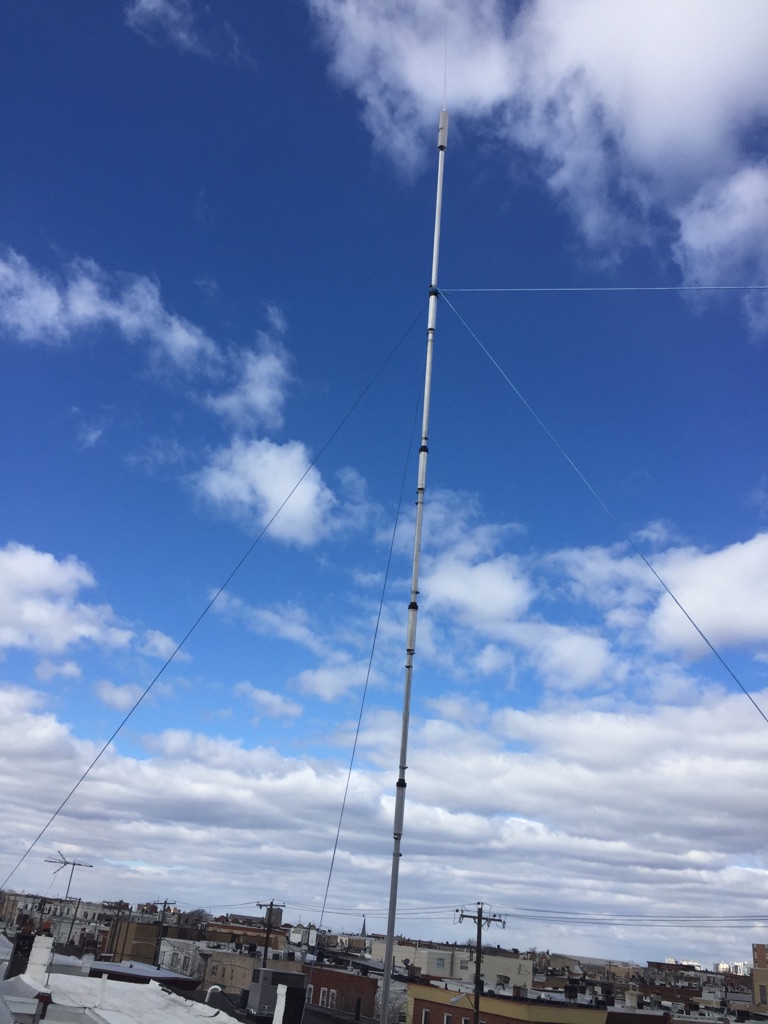
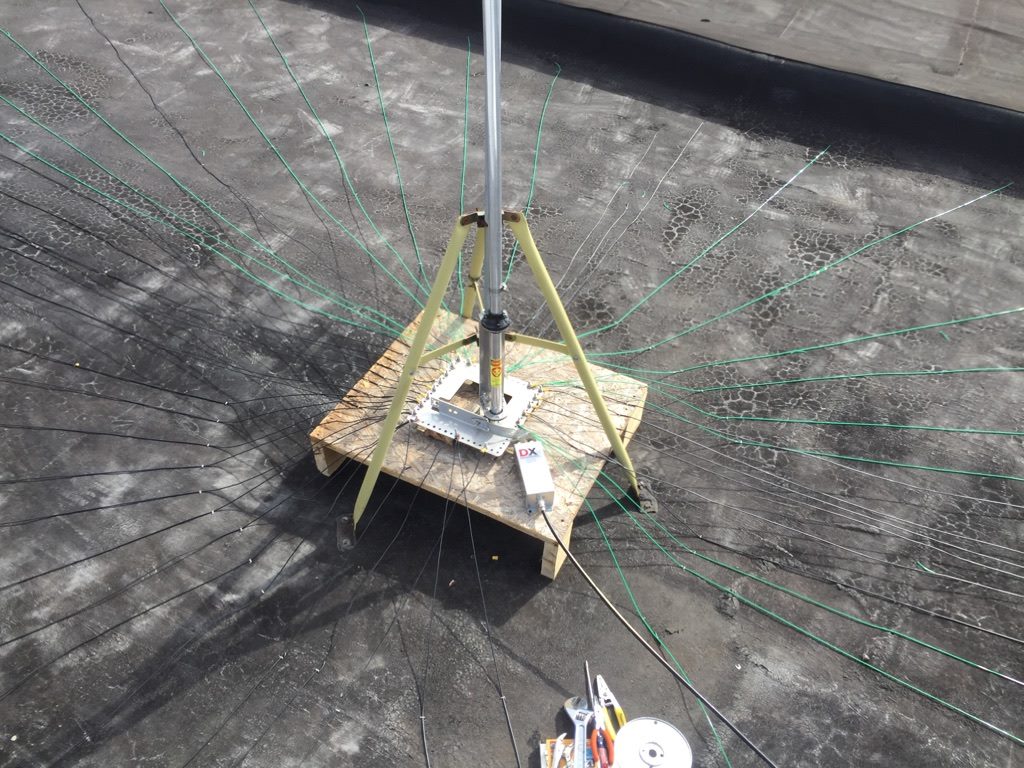
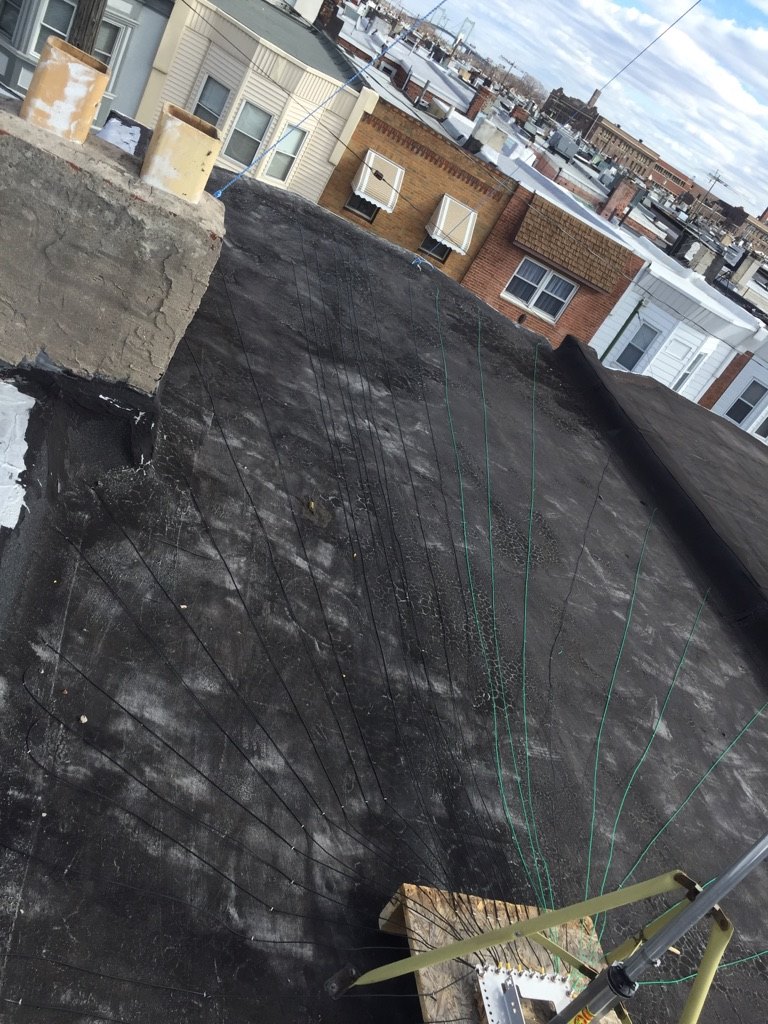
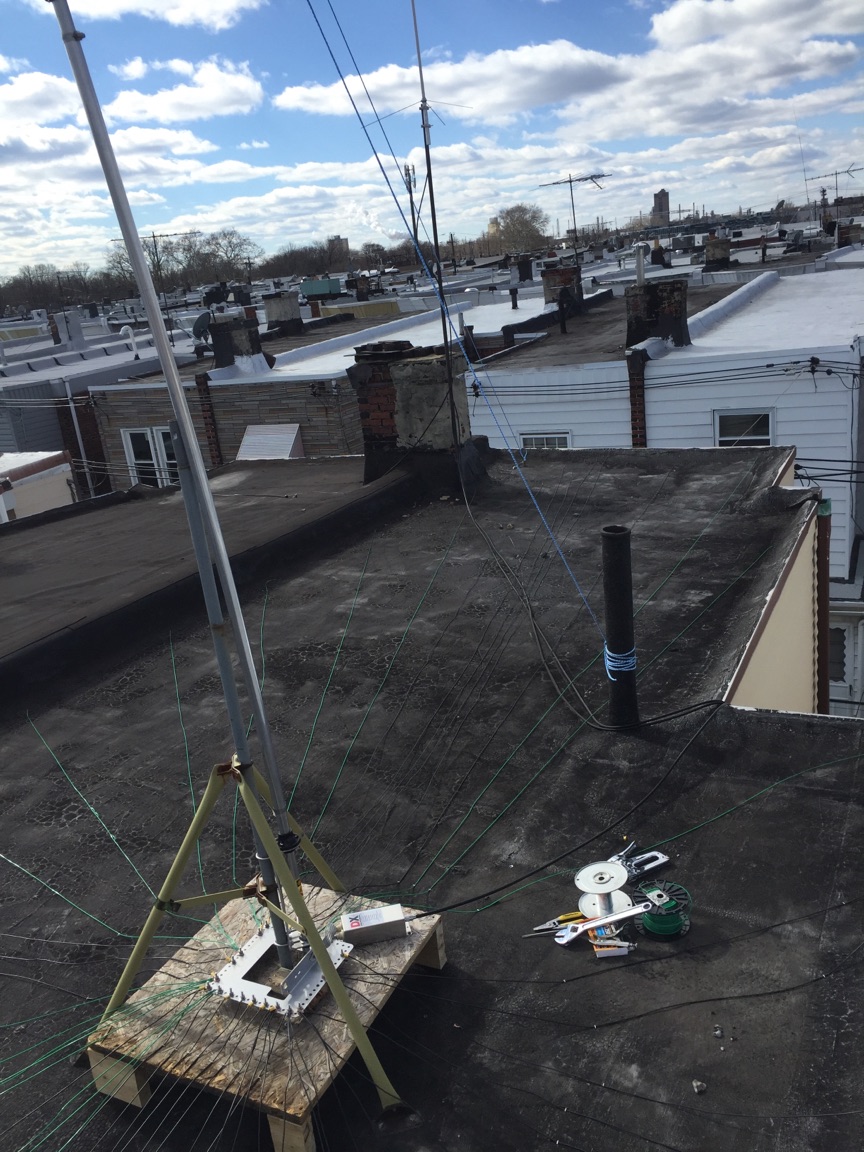
As you can see in the last picture the antenna occasionally made contact with the metal mast which supported it. When this happened it would create a short to ground and completely detune the antenna. As such I added some insulating foam to the supporting mast to ensure it wouldn't be able to make conductive contact with the antenna.
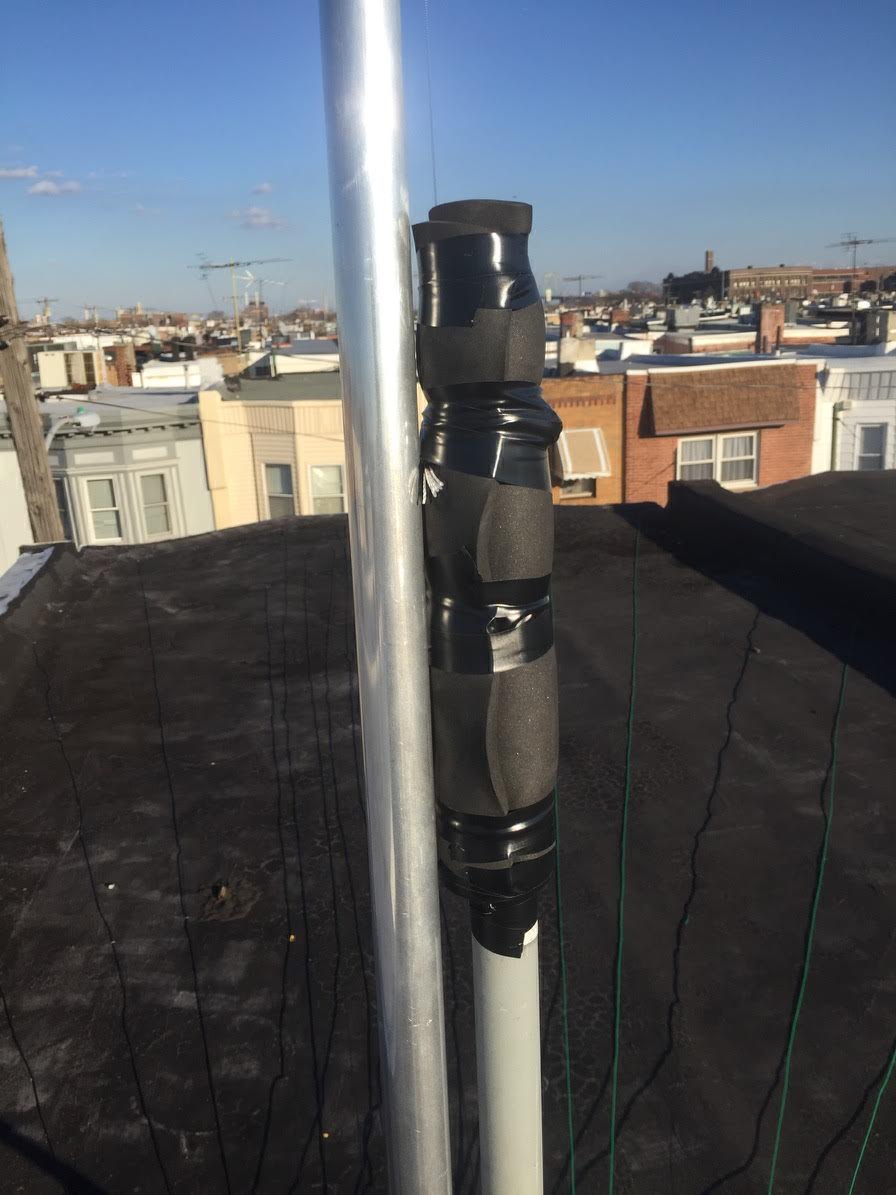
Finally to top everything off I added a new 8 foot by 5/8 inch ground rod to the system. For that I chipped a hole in the cement in my back yard and hammered it into the ground just outside the radio shack's window. I then attached a ground clamp to it and ran some solid bare copper wire (4 AWG) to the window on the second floor.
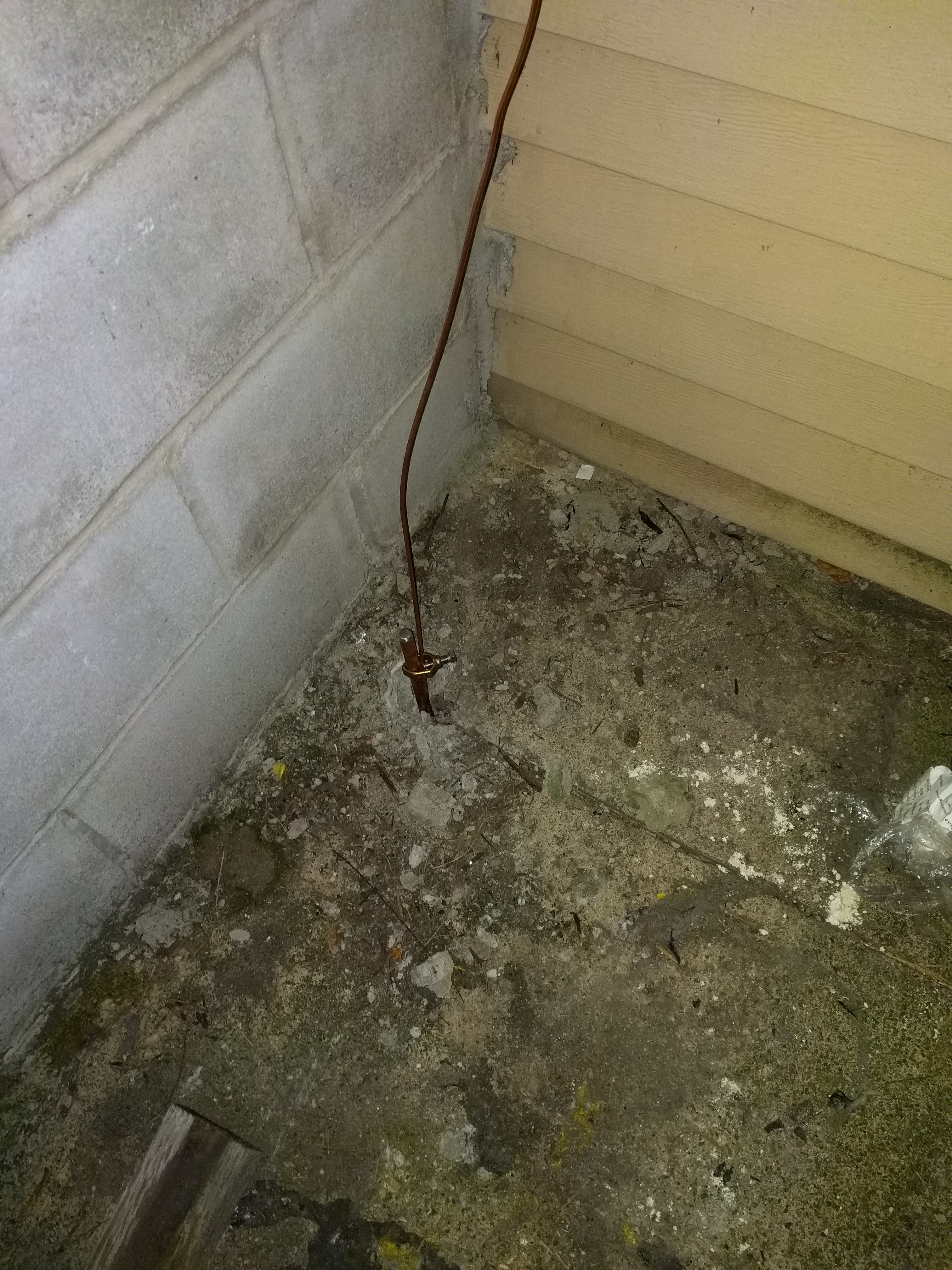
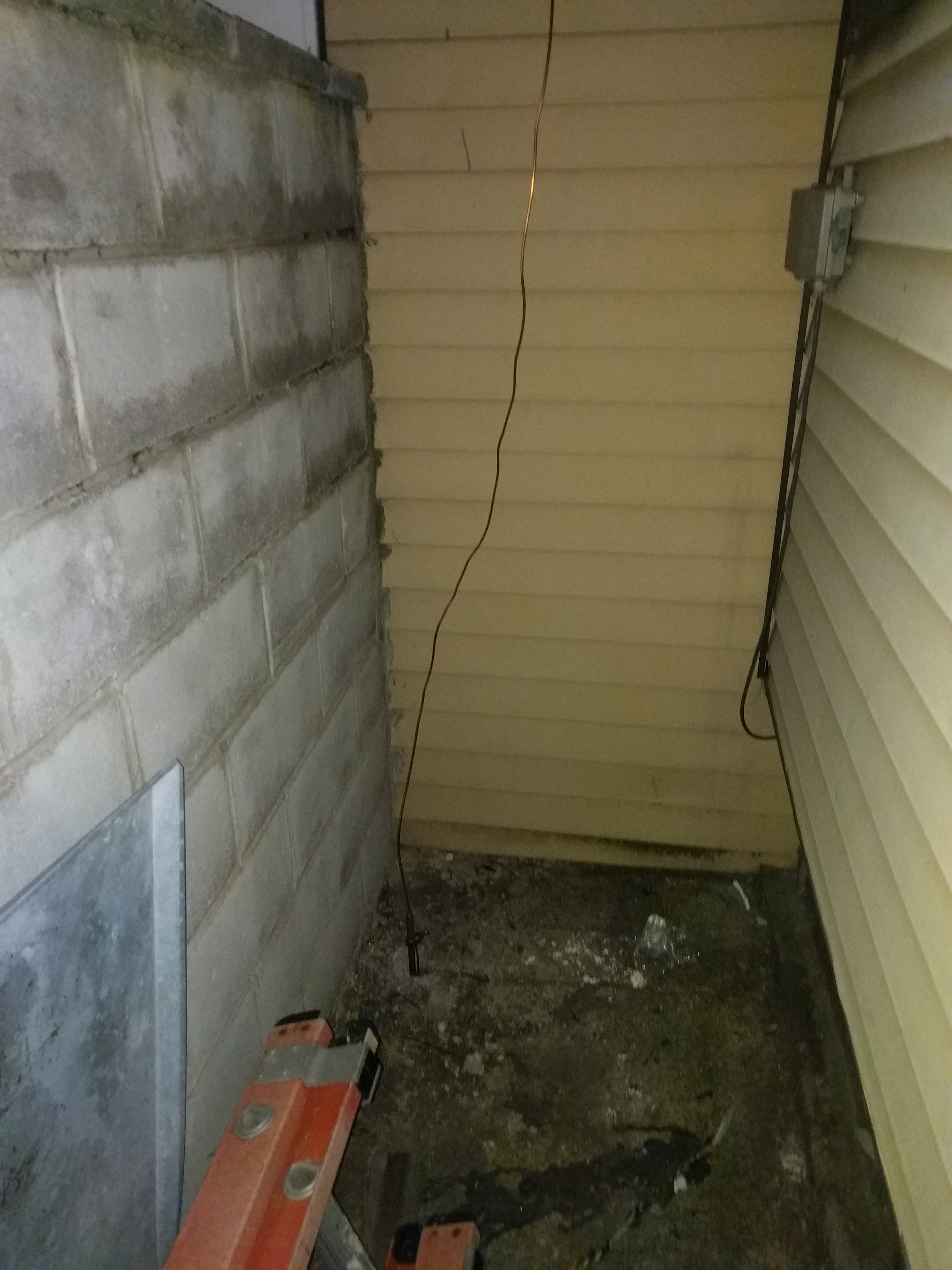
For now I have the coax and grounding cable coming directly through an open window. But I have a window panel to be installed to fix that. The ground cable must be connected with the house's electrical ground or else dangerous ground loops can occur; this connection was made in the shack and an additional connection will be added in the basement to ensure it is up to electrical code. Inside the shack at the window I installed an automatic remote tuner. The ground wire connects to the Tuner as well as running to a junction box which connects together all the radio equipment in the shack.
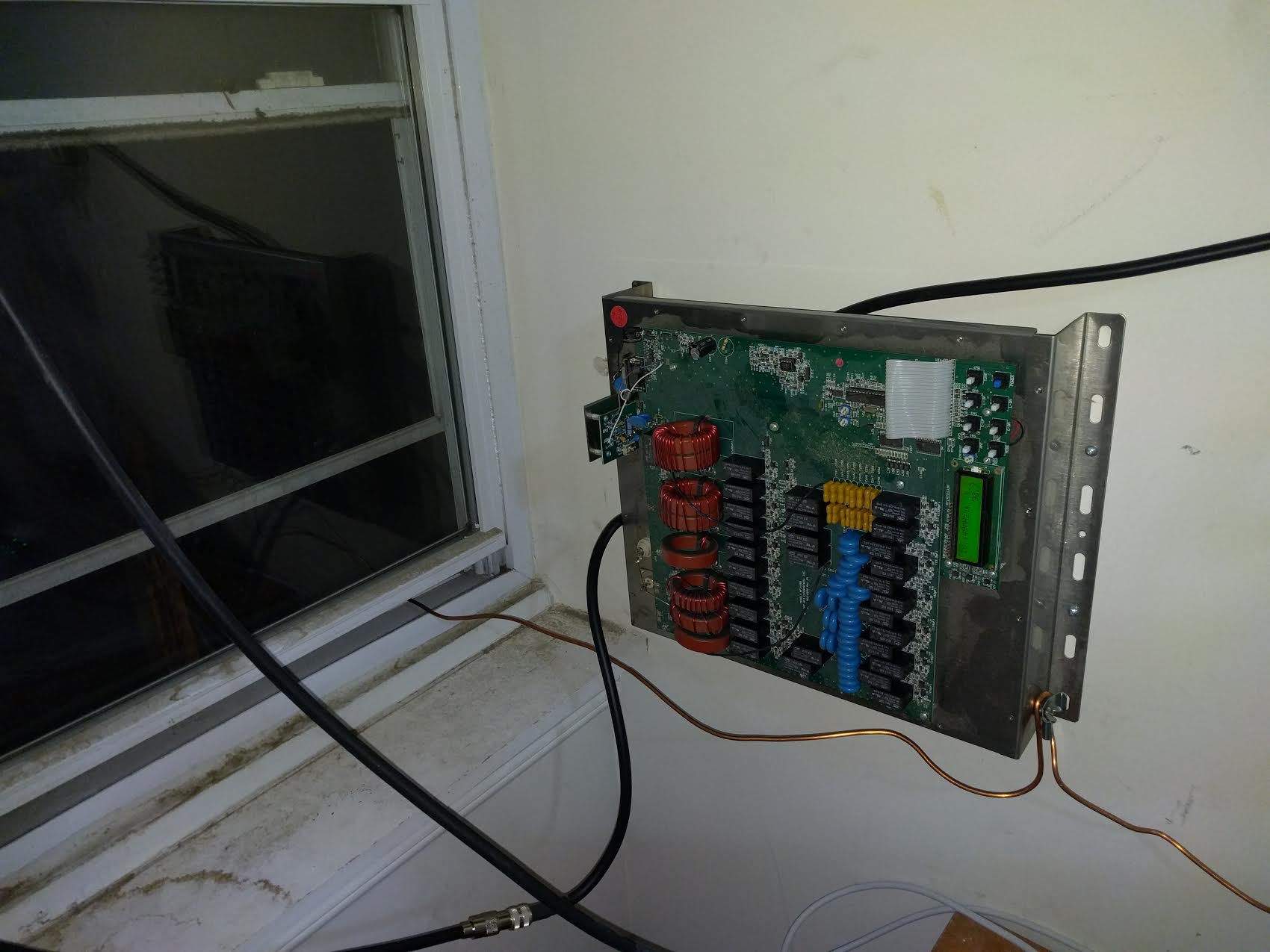
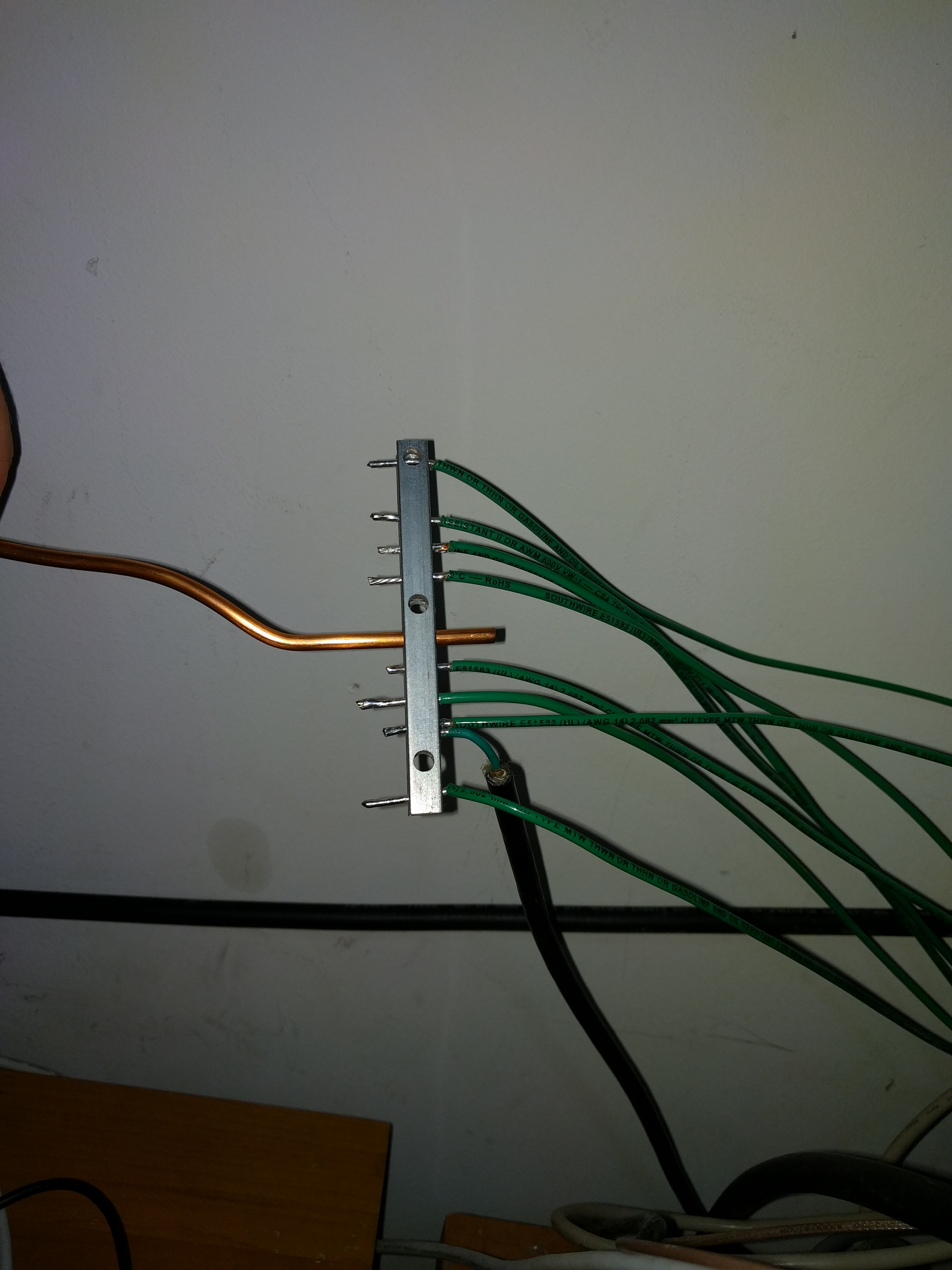
It is important you use a grounding junction such as the one above rather than daisy chaining your ground together between devices. This ensures that even if one connection becomes loose all the others still maintain their connection to ground.
By having additional paths to ground it reduces the impedance as well as resistance for the path from the radio and antenna to the ground rod. This can and has had a noticeable effect on reducing unwanted effects and RF Interference.
And finally a picture of the entire shack just for completeness.
